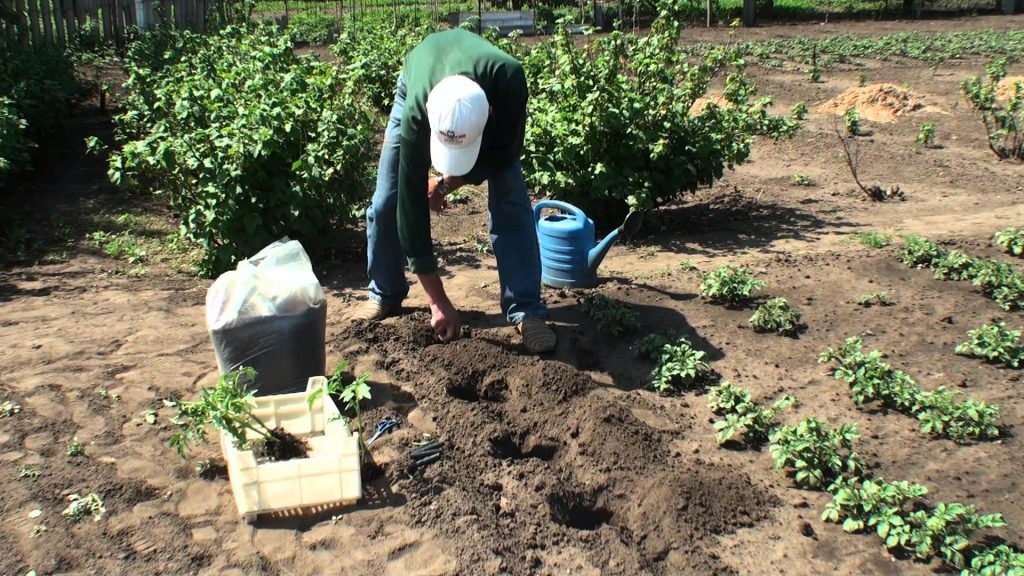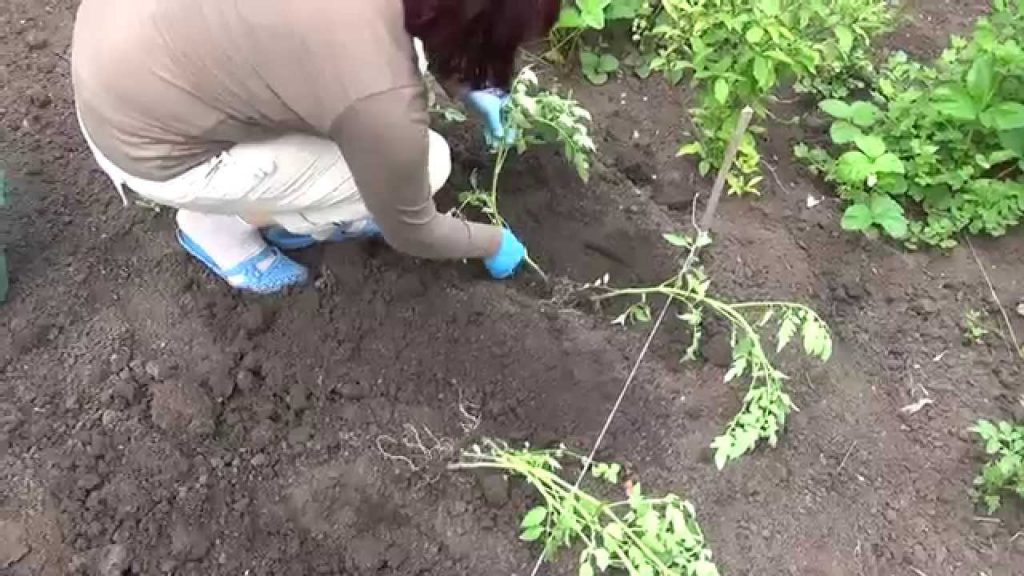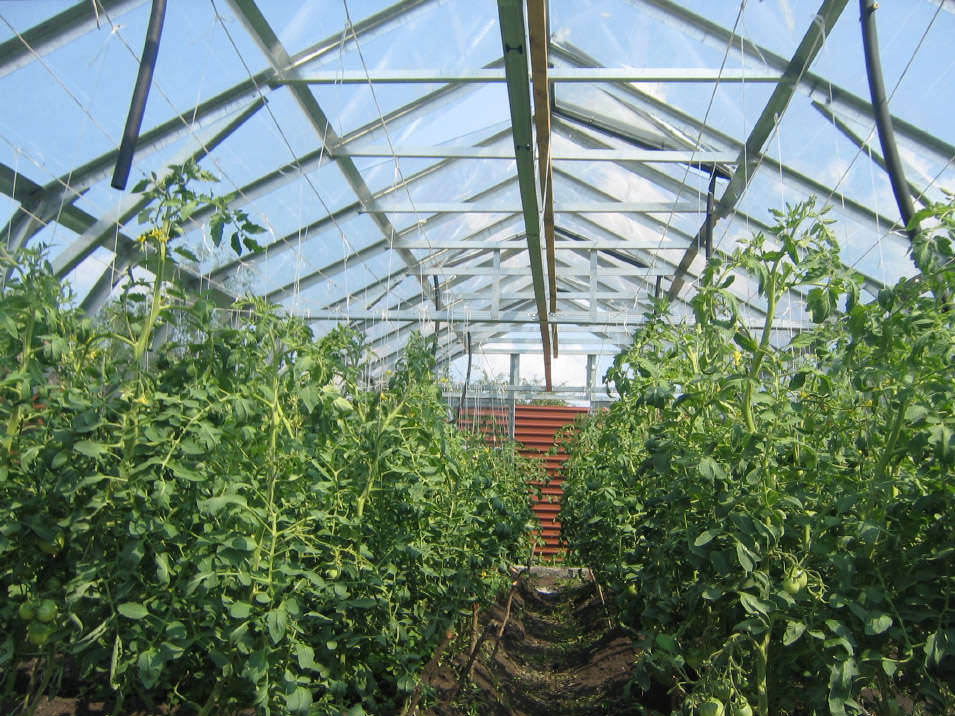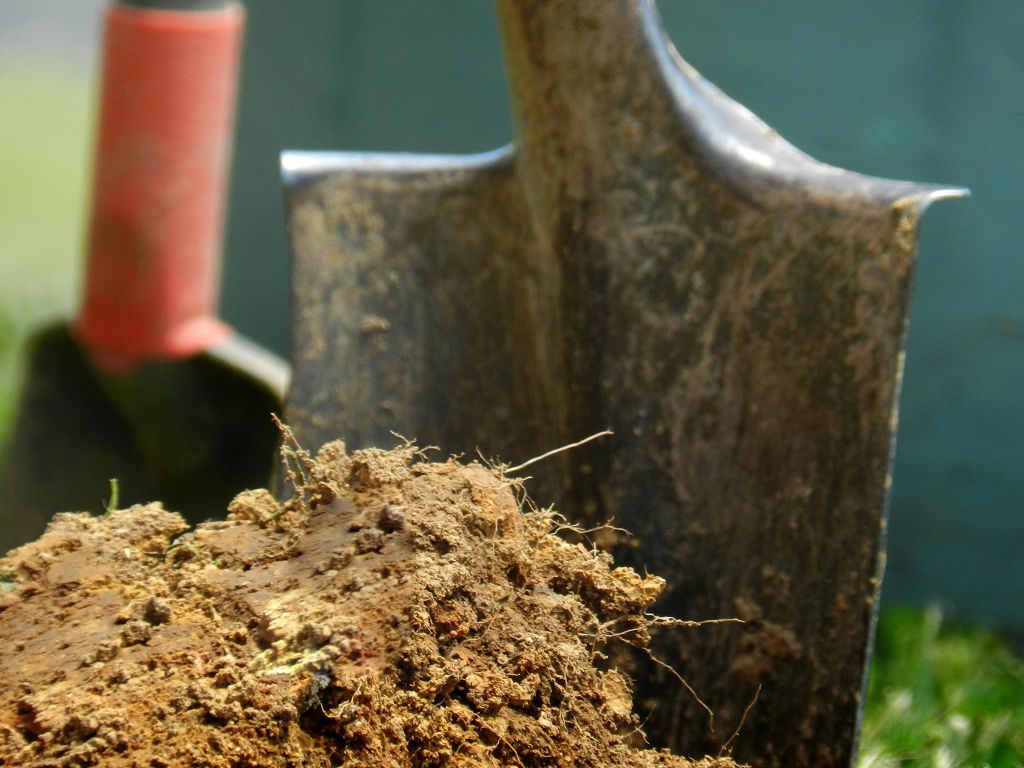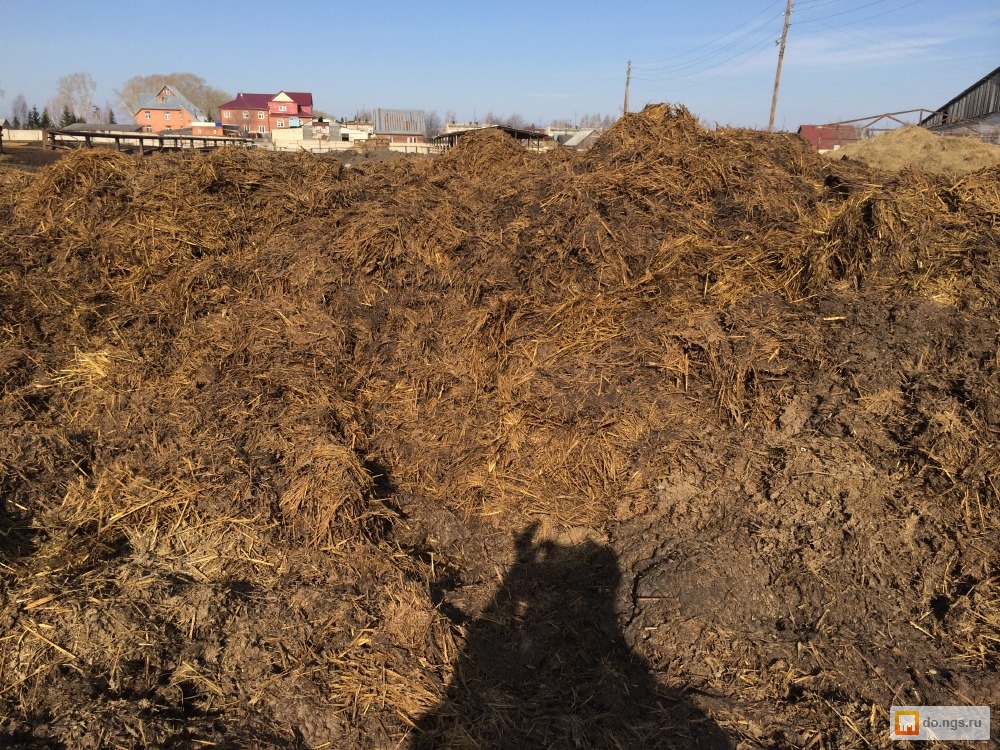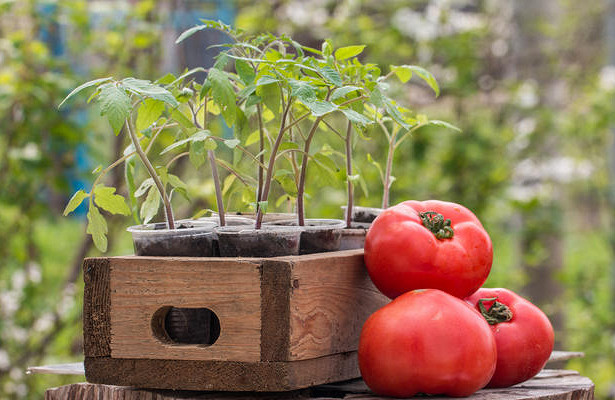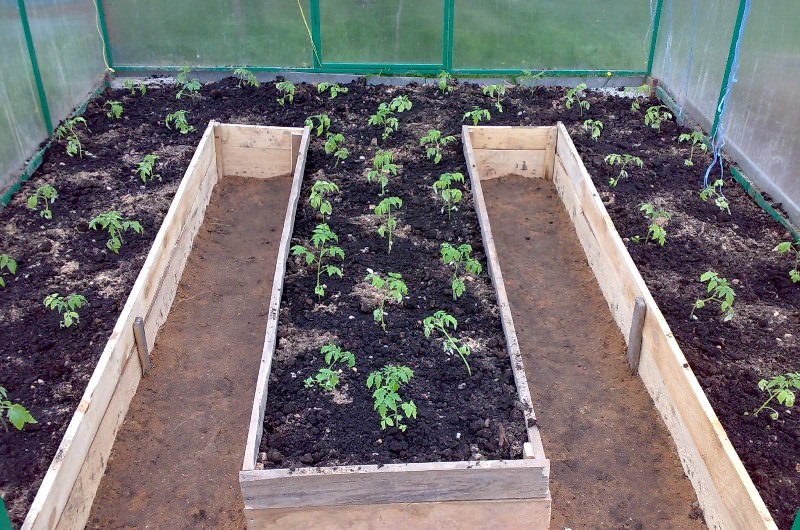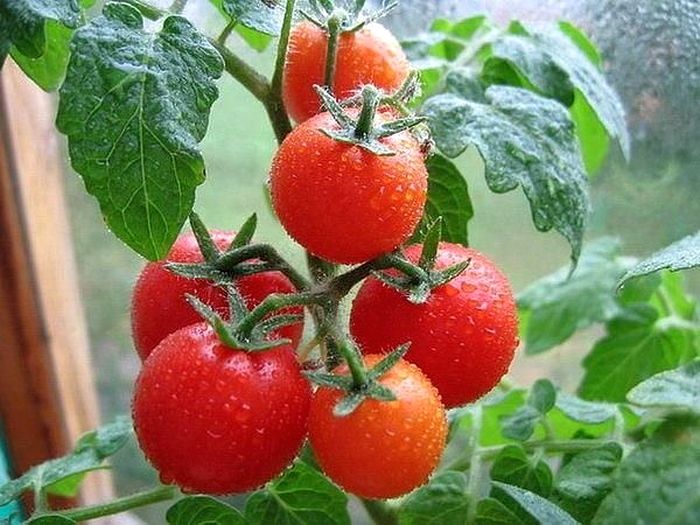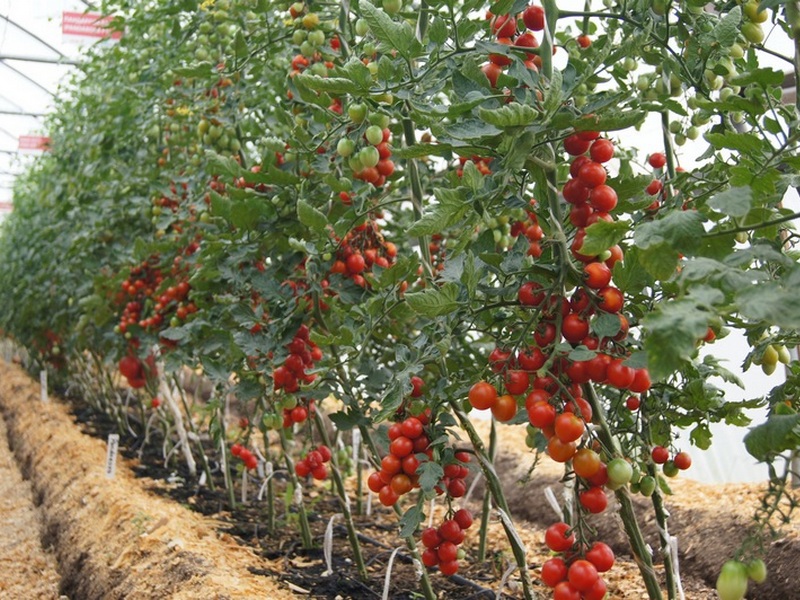Content:
Tomatoes are annual herbaceous plants of the Solanaceae family. Branched stems sometimes reach a height of more than 200 cm. During flowering, the plant is covered with yellow flowers, which later turn into juicy fruits. There are several types of crops, but large-fruited tomatoes are the most popular. It happens that even with proper care, rot appears on the plants, and the ovary does not form. In this case, the fault is too small distance between the bushes. When planting seedlings, it is important to first determine the planting scheme, thanks to which you can achieve a good harvest. When planting according to the scheme, you can use a marker from the board, which will help you simply determine the location of each subsequent hole. At what distance to plant tomatoes in order to increase the fertility of the crop will be described below.
Schemes for planting tomatoes in open ground
At what distance to plant tomatoes - this question is often asked by beginners in the field of gardening. Experts identify a number of convenient layouts for tomato seedlings in the open field. Which planting layout is best suited directly depends on the variety of varieties that will be planted in the soil.
Rows scheme
This landing pattern is simple and does not require special knowledge. The main advantage of the ordinary scheme is considered to be a sufficient degree of lighting of the bushes and a good level of air circulation. The disadvantages include the large area of the site, which is for such plantings.
The row method is ideal for planting:
- undersized seedlings;
- medium layer;
- single-stem tall seedlings.
To facilitate the process, you can make preliminary markings. Depending on the height of the crop, 35-50 cm of width between bushes and 55-80 cm of width between rows will be required. In addition, it is important to pay attention to how long the selected tomatoes are ripening:
- Early ripe tomato varieties are compact, they can be planted at a distance of 35 cm from each other. The row spacing should be between 45-50 cm.
- Mid-season varieties that grow into open bushes are best planted at a distance of 45 cm from each other, and the row spacing should be at least 65 cm.
- Late-ripening varieties occupy a very large area. It is best to plant seedlings at a distance of 50-60 cm from each other. The row spacing can be made 75-85 cm.
Tape-nesting method
The planting scheme for tomatoes is identical to planting in rows. The main difference is the two rows located between the aisles. The width between closely spaced rows should be within 45 cm, the passage - at least 75-85 cm. Seedlings are planted at a distance of 45 cm from each other. This planting pattern is ideal for the determinant variety, making it easier to care for tomatoes and pick tomatoes. If it is necessary to plant an indeterminate variety using a similar method, the width of the passage should be increased to 100 cm, the distance between the tomatoes during planting should be increased to 50 cm, and the distance between the rows should be at least 50-55 cm.
Square-nest method
The square-nesting method is best for planting tomatoes in the open field. Caring for them will not be entirely convenient, but it is this method that has proven maximum efficiency.To use the method, the seedlings should be placed in the corner parts of the square. There must be at least 2 plants in one hole. After a while, only 1-2 viable seedlings remain in the hole, and the rest should be removed without regret.
Schemes for planting tomatoes in a greenhouse
After how many centimeters to plant tomatoes - this question often worries summer residents.
In greenhouse conditions, experts recommend planting tomatoes according to the scheme:
- Parallel. In this case, the processing time of the rows is significantly reduced and the crop yield increases. The seedlings are planted in parallel rows. The width of the passages in this case is 50 cm, and the distance between the bushes is within 45 cm.
- Square-nested. It is best to use the technique for planting tall varieties that require loose, weed-free soil.
- Chess. This method is ideal for the determinant variety. For disembarkation, mark the location of 2 rows. Saplings are planted like a checkerboard. The distance between the holes should be 45-65 cm, depending on the type of crop. The width of the aisles should be between 40-50 cm. Each bed is planted in turn.
It is more expedient to grow hybrid tomatoes in polycarbonate greenhouses. It is recommended to plant them at the moment when the seedling reaches a height of 30 cm. Experts say that the distance between the bushes plays an important role. That is why it is so important to choose the optimal distance so that each bush receives a sufficient amount of light and air.
When planting an indeterminate variety of tomatoes, it is worth remembering that they do not grow well in greenhouse conditions. To achieve good fertility in the greenhouse, it is worth planting indeterminate tomatoes in a checkerboard pattern.
For greenhouse conditions, the parallel and staggered method is perfect. With the tape-nesting method, the recommended distance between tomatoes is from 50 to 80 cm, in the row spacing - at least 90 cm undersized.
When planting indeterminate and determinant varieties at the same time, it is important to correctly place them. Tall crop varieties are placed in the center of the greenhouse. A distance of 55-60 cm should be maintained between the bushes. Low-growing bushes are planted at the edges. The distance between the bushes is reduced to 25 cm. The standard type of culture (for example, Bull's forehead) allows 2-3 seedlings to be placed in one hole at once. In this case, the distance between the tomatoes should be increased to 35 cm. Combined planting obliges to form bushes in a timely manner.
Distances depending on the variety
Tomatoes are classified by shape, the degree of tallness of the bushes and the level of distribution of its roots:
- The low-growing type of culture (standard) has a compact root system and a height of no more than 45 cm. Low-growing varieties can be planted with 6 bushes per sq. M. land. Thanks to strong and strong trunks, standard tomatoes do not need to be tied up.
- The medium-sized type of culture (determinant) reaches a height of more than 130 cm. The root system of such tomatoes is well developed, therefore, per sq.m. will accommodate only 3-4 bushes of the plant. It is very important to carry out the formation of bushes in a timely manner.
- The tall type of tomato (indeterminate) reaches a height of 3 m. The root system grows so strongly that it will not be possible to plant more than 2 bushes per square meter.In no case should you give in to the desire to save space and plant more bushes in a small area. Plants will receive less air and sunlight and will not bring a good harvest. It should be borne in mind that a tall culture requires a lot of attention, as it needs tying, pinching and pinching.
The depth of the hole depends on the variety. For a low-growing tomato, a shallow hole is required, about 20 cm, and for a tall culture, the notch in the ground should be more than 30 cm.
With a standard greenhouse size of 3 × 6 m tall tomatoes, no more than 60 pieces can be planted there. Low-growing bushes in the same greenhouse will fit about 80 pieces. It is very important to enrich the soil before planting with peat or humus.
If desired, you can place the tomatoes in two narrow rows. A tall variety should be placed closer to the greenhouse wall, and a low-growing early ripening culture should be planted near the aisle. Fruits that ripen early can be quickly harvested and the tall variety will have room to grow. It is unacceptable to run the bushes before the formation of thickets, as the leaves will receive less sunlight.
How to fertilize and process seedlings after planting in the open field
After planting a crop in open ground or a greenhouse, the seedlings should be processed in a timely manner and the soil should be fertilized.
- Irrigation of tomatoes. The first time after planting seedlings in the ground, you should not water them. They will need time to settle down. The water that was poured out during planting will be enough for rooting. Experts recommend watering for the first time 10 days after planting. When watering, the water must fall under the root. If you sprinkle water on the foliage of tomatoes when watering, they will hurt. It is unacceptable to use drip irrigation, as it contributes to a sharp decrease in air and soil temperature. As a result, the flowers of the plants crumble, the setting of fruits and their ripening are delayed. Also, this method becomes the cause of fungal infection of tomatoes. Watering is recommended in the afternoon to reduce evaporation losses.
- Loosening the soil. After each watering, it is necessary to loosen the soil around the tomatoes and get rid of weeds. During the first loosening, it is important to maintain a depth of about 10 cm in order to create good conditions for heating and oxygenation in the upper layers of the soil. Compliance with these conditions is necessary for tomatoes in the growing season. Subsequent loosening is carried out with a depth of no more than 5 cm. The compacted surface of the earth harms the roots of plants.
- Hilling bushes. Hilling is carried out on the 12th day after planting the seedlings.
- Mulching the soil allows you to reduce the number of watering and accelerate the process of fruit ripening. Straw, sawdust and peat are perfect for unfolding between rows.
- The introduction of top dressing allows you to increase the yield. Tomatoes need 4 root dressings per season. Experts recommend the following application procedure: for the first time - 21 days after planting the seedlings in open ground. To do this, you need to mix 1.5 tbsp nitrophoska and 1.5 tbsp. fertilizer "Ideal" and add to 15 liters of water. One bush needs at least 0.5 l of solution. The second time is after the opening of the second flower cluster. It is necessary to combine 1.5 tbsp. "Agricola-Vegeta", 1.5 tbsp. superphosphate and 1.5 tsp. potassium chloride. The mixture is added to water (15 L). Each bush will require 900-1000 ml of solution. For the third stage of feeding, which is carried out 10 days after the previous one, experts recommend using "Ideal" and 1.5 tbsp. nitrophosphate for 15 liters of water. For each bush, add 1 liter of solution. The fourth stage is carried out 14 days after the third. Add 1 tablespoon to a bucket of water. superphosphate. For every sq.m. the site needs 9-10 liters of fertilizer.
You can also feed a tomato with poultry manure, which is an excellent balanced fertilizer containing a large amount of trace elements. To prepare the solution, fill the bucket halfway with bird droppings and fill it to the brim with water. After insisting for about 3 days, dilute the concentrated solution with water (1:15). Pour 3 liters of solution under each of the bushes.
By correctly planting and observing the distance between tomato seedlings in open ground, you can provide yourself with a good harvest. Which method to choose depends on the variety being grown. Fertilizers applied in a timely manner play an important role in the process of fruit formation, which is why it is important to follow the recommendations of specialists regarding the care of bushes after planting seedlings.
